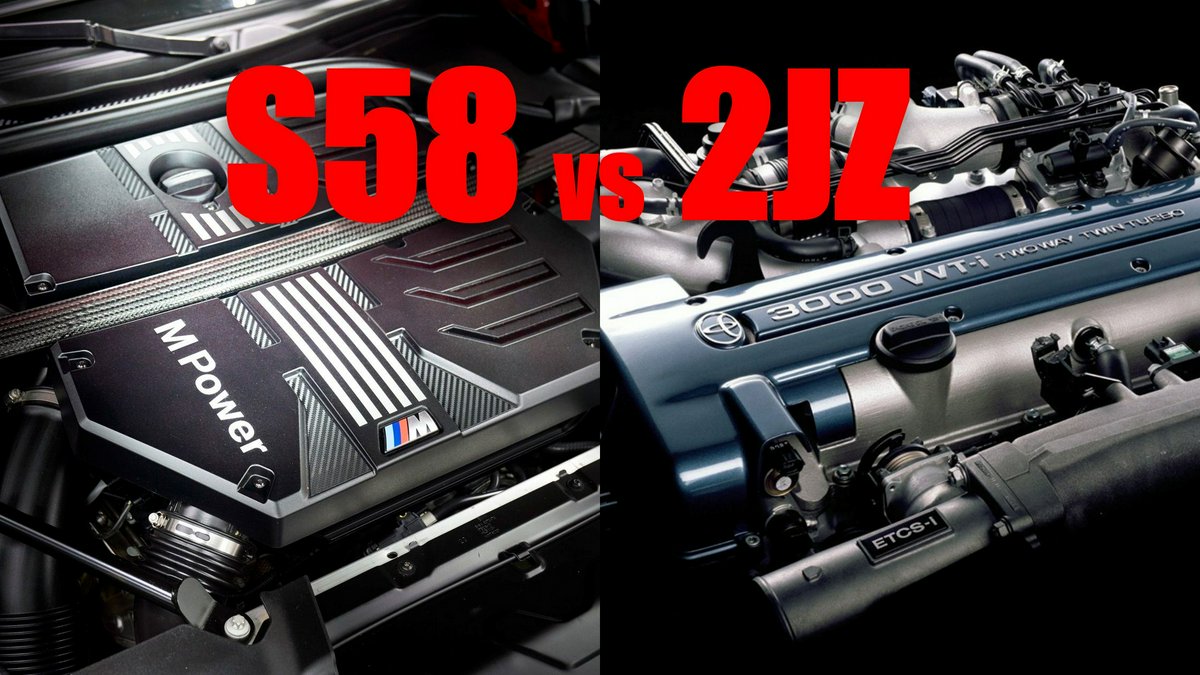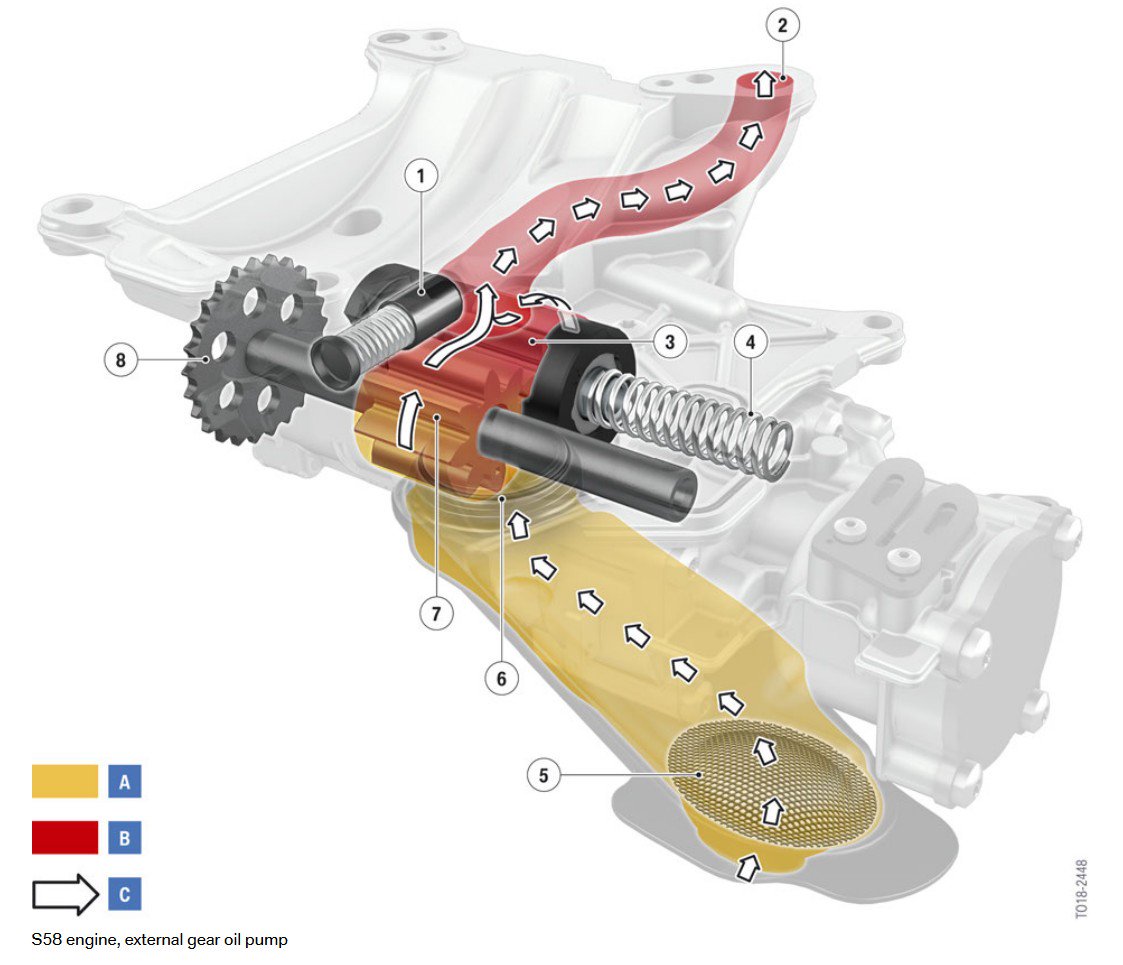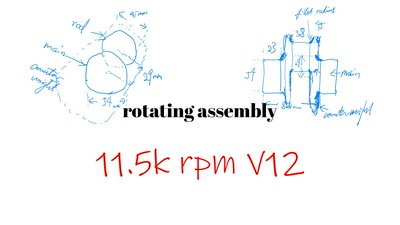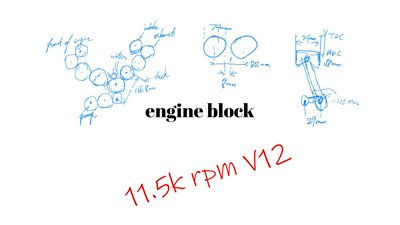techXXX
S58 vs 2JZ: Iconic Engine Designs Compared
Today, I compare the designs of the BMW S58B30 and of the Toyota 2JZ-GTE in eight aspects from the bottom up, including block, bearing, oil pump, stroke ratio, piston and conrod, fuelling, air flow, and valve timing.

Today, I compare the designs of the BMW S58B30 and of the Toyota 2JZ-GTE in eight aspects from the bottom up. This does not include the accessories.
Block
The 2JZ uses a cast iron block, while the S58 is all-aluminium. BMW uses LDS arc wire spray-on coating on the aluminium bore surface. LDS provides good wear resistance; however, it does not increase the strength of the bore, which is weaker than cast iron. On the flip side, the aluminium block transfers heat better.
Bearing caps & Bearing
Both the 2JZ and the S58 use only two bolts on the main bearing caps. The S58 uses lead-free Federal Mogul bearings all-around. These are maybe better for the environment but are less durable.

Oil pump
The S58 uses a chain-driven external gear oil pump, while the 2JZ uses a crank-driven internal gear oil pump. External gear oil pumps have higher pressure capabilities but do not work well with high oil viscosity or oil contamination. The internal gear type is stronger and smoother; it can also work with higher viscosity oils.
Stroke ratio
The 2JZ has a stroke ratio of 1 with 86mm bore, while the S58 is undersquare with a bore of 84mm and a stroke of 90mm. Typically, an undersquare engine trades lower power limit for better low-end torque.
In this case, it is a compromise because the S58 is based on the B58 with the same 91mm cylinder bore spacing. The S58 already has a higher stroke ratio than the B58.
Piston & Conrod
The 2JZ uses cast aluminium pistons, while the S58 uses forged Mahle pistons. Both engines use forged conrods. The conrod and rod caps are more heavy-duty on the 2JZ, but the BMW has fracture-split bearing caps.
One extra point to note is that forged pistons have higher heat expansion. Forged aluminium pistons in the 2JZ’s cast iron block may not be suitable for street use.
Fuelling
The S58 is direct-injected, while the 2JZ is port-injected. Normally, port injectors can spray more fuel, because it can work almost throughout the engine’s working cycle, while direct injectors have a shorter time window. However, BMW uses two high pressure fuel pumps on the S58, and it seems that its injectors can deliver a lot more fuel than the stock tune.
Valves & Air flow
Because of direct injection, the head of the S58 flows much less air. This is for two reasons: One, the direct injectors must now go directly into the combustion chamber; together with a smaller bore, there is less room for the valves. More important, DI engines require more air tumbling to improve air-fuel mixing inside the combustion chamber. This is not the case with port-injected engines, which can maximize volume.
This air-flow characteristic is one of the main reasons why engine builders like port-injected old-timer engines.

Valve timing
The 2JZ only has VVT-i, which adjusts only intake valve timing. The S58 has dual-Vanos for variable intake and exhaust timing. It also has Valvetronic that can adjust the valve duration and lift. In my opinion, this is a main differentiator, because with more aggressive camshafts, the 2JZ would sacrifice usability on the street. The S58 may not need as aggressive camshafts and could possibly remain usable on the street.
Another important point to note is that the 2JZ is a non-interference engine. It uses an easy-to-change timing belt. The S58 is an interference engine with a rear-mounted timing chain that can stretch.
Conclusion
In conclusion, as a stock engine or with light tuning, the BMW S58 seems to be a superior design. This is unsurprising, because it is almost 4 decades newer. I think the most important aspect that favours the S58 is in the valve timing.
However, for big power builds and for long-term collections, the 2JZ is a much more solid foundation. The engine is mechanically simple and was designed to last. Today, one can build a 2JZ with all aftermarket parts, including the block.



